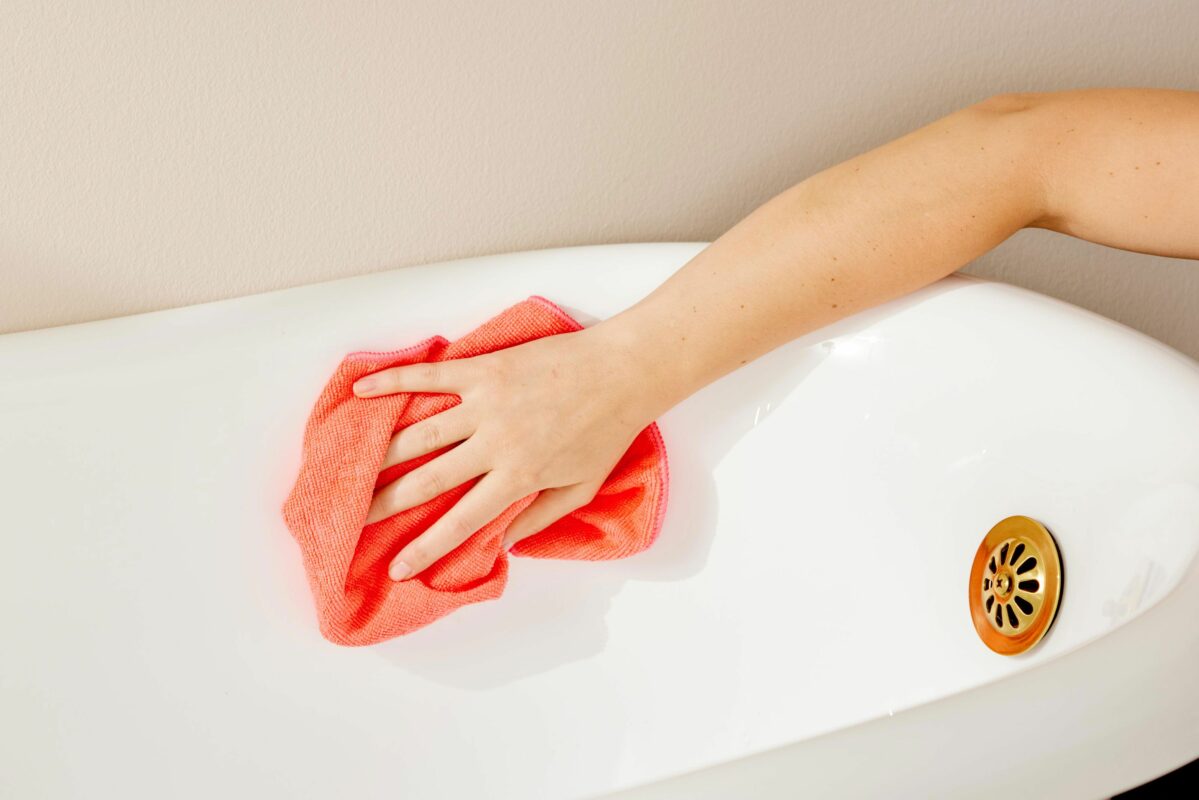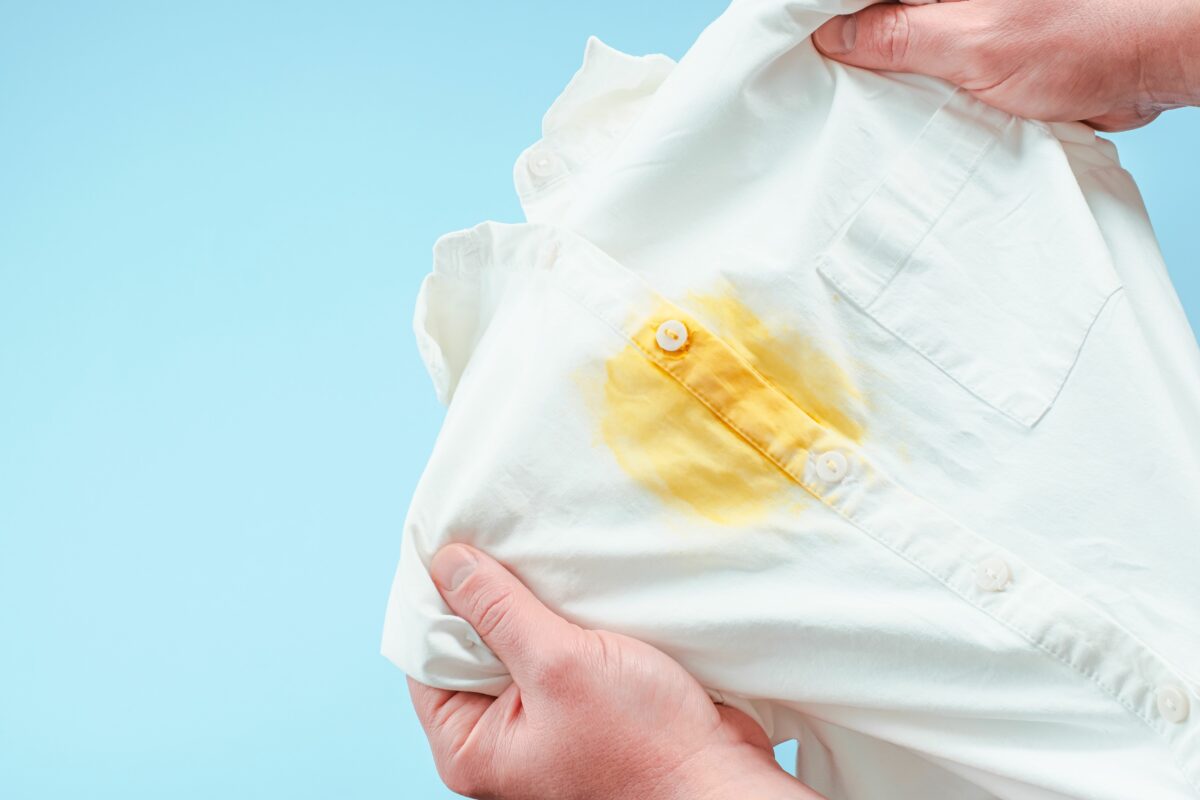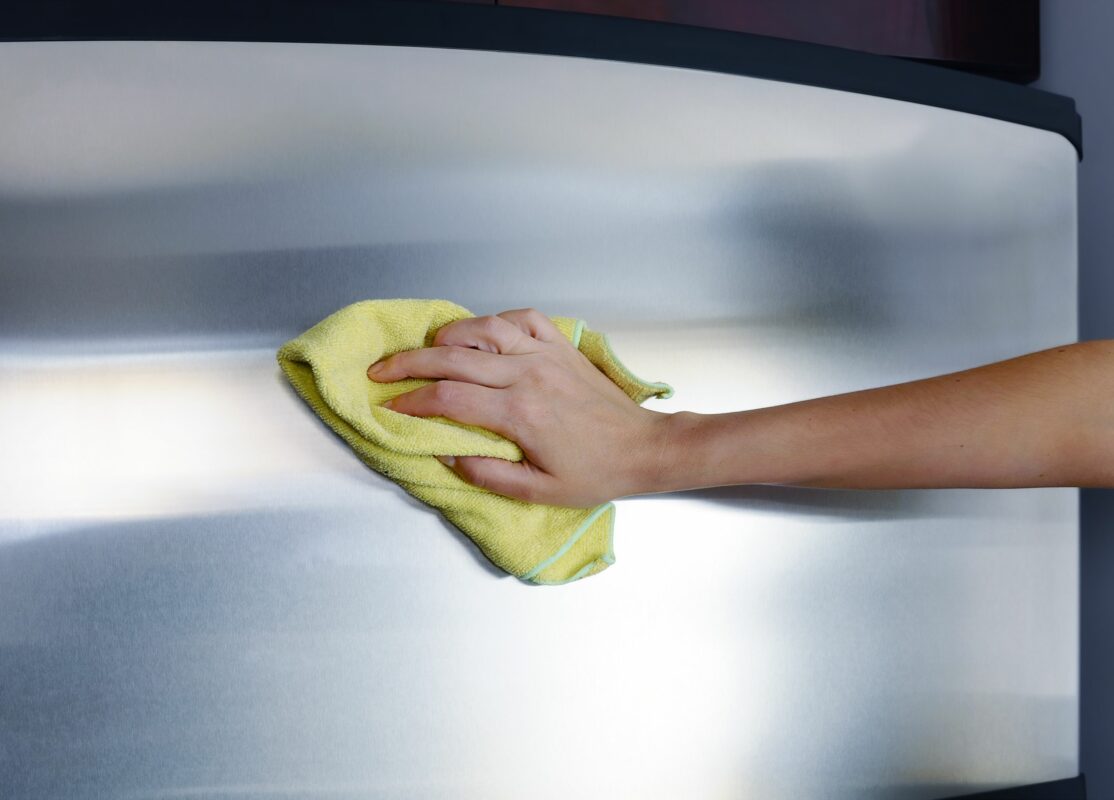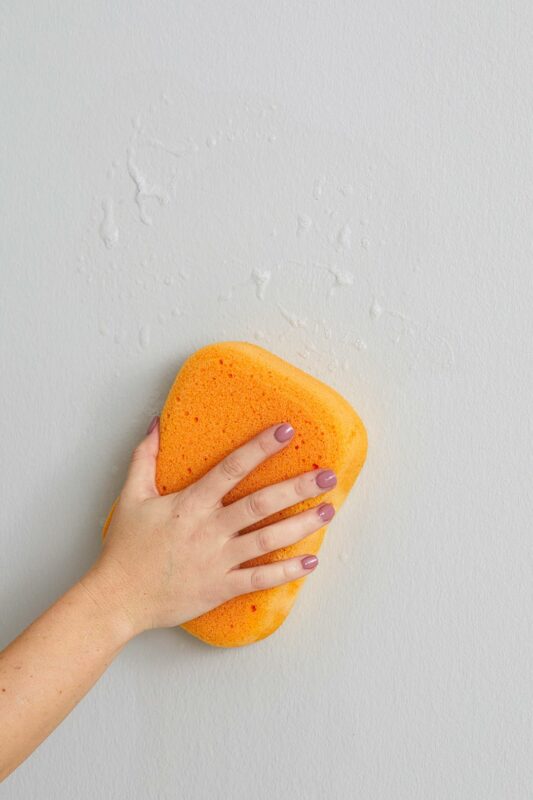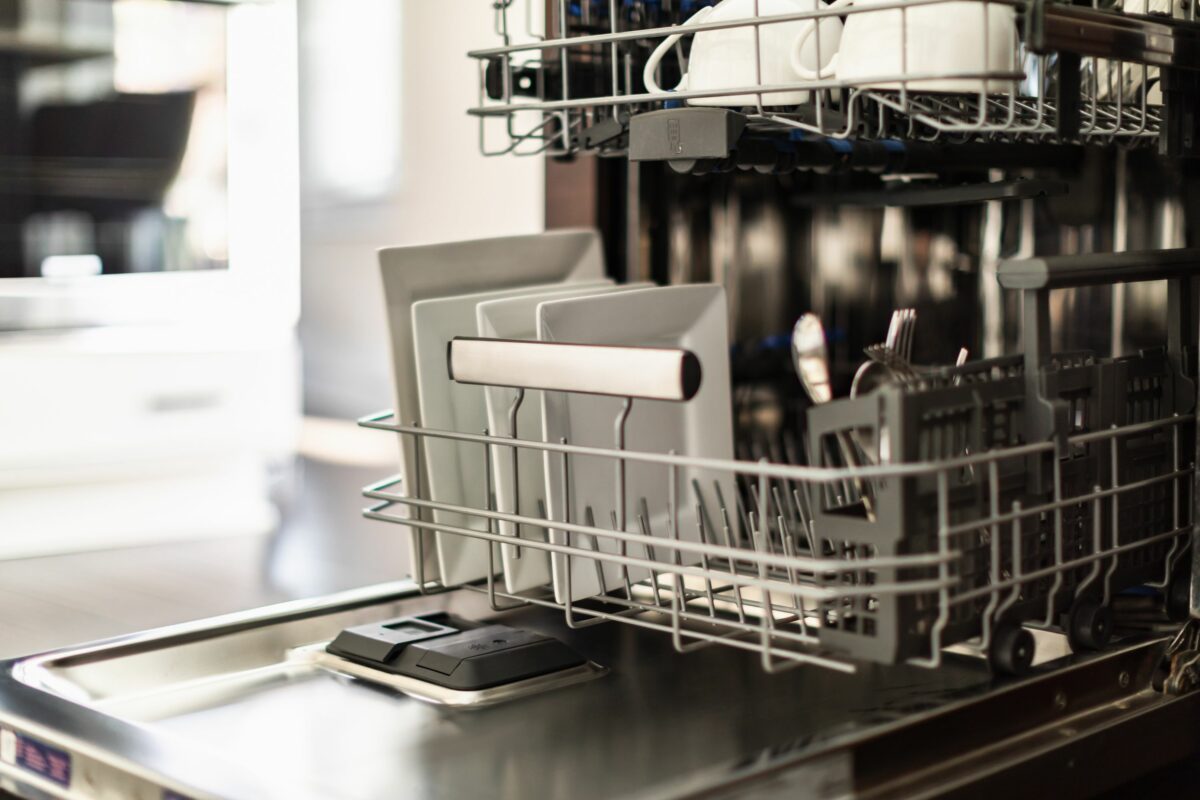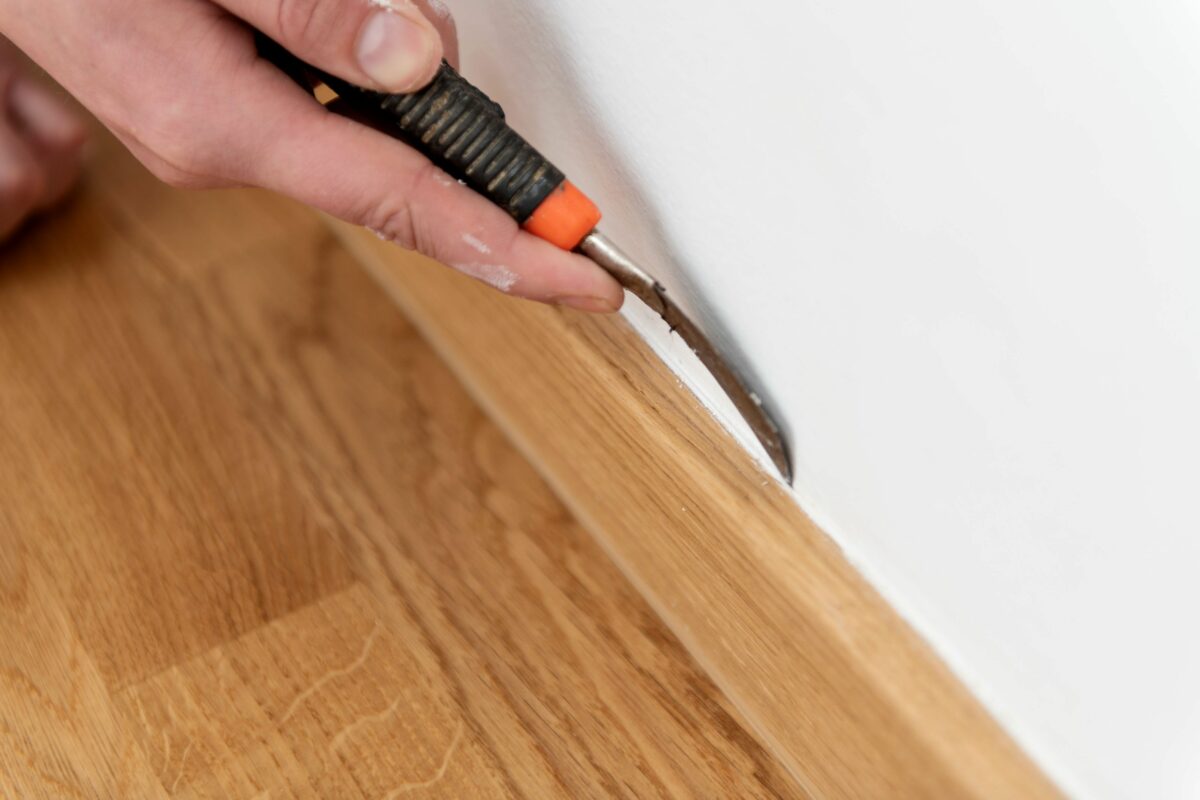Cleaning a toilet is an essential part of a bathroom cleaning routine, helping to eliminate and prevent the formation of germs and unsightly stains. And almost no stains are more unsightly than ugly rings that form in the toilet bowl.
You might be relieved to hear that if toilet bowl rings are a common problem in your household, it is most likely not a result of anything that you’re doing wrong when cleaning the toilet. These rings are most often caused by minerals in the water supply, especially in areas with hard water.
This guide explains what causes toilet bowl rings, how to remove the stains depending on the severity of the buildup, and how to prevent it from happening in the first place.
What Causes Toilet Bowl Rings?
Toilet bowl rings are typically the result of mineral deposits building up on the surface of the bowl. This buildup might appear brown or green and is caused by the calcium, iron, lime, and magnesium found in the water supply, particularly in areas with hard water.
When removing mild staining from mineral buildup, distilled white vinegar will break down hard water deposits without requiring harsh chemical agents or a lot of scrubbing. To remove deeper, more persistent stains, use a mild abrasive paste to gently break down and scour away mineral buildup. Bon Ami, Bar Keepers Friend, and The Pink Stuff are mild abrasives that are particularly effective at removing mineral and rust stains from hard, nonporous surfaces.
While mineral deposits are usually the culprit when unsightly rings form in a toilet bowl, bacterial formation is also common. If the ring appears pink or light orange, it is Serratia marcescens, a bacteria that thrives in damp environments and commonly forms on grout, around drains, and along toilet water lines. Commercial bathroom cleaning agents and everyday household products like distilled white vinegar will eliminate and remove S. marcescens stains.
How to Remove Toilet Bowl Rings Using Vinegar
This method for removing rings in toilet bowls is best suited for stains caused by mineral buildup.
Step 1: Soak Paper Towels
This mostly hands-off method is the easiest way to remove mild mineral deposits from toilet bowls. Start by soaking several paper towels in distilled white vinegar. The acid in the vinegar will break down the mineral buildup.
Step 2: Place Paper Towels in Bowl
Lay the vinegar-soaked paper towels in the toilet bowl, overlapping them as if you were doing papier mâché. Wear household gloves to protect your hands from the toilet water.
Step 3: Soak for 30 Minutes
Allow the paper towels to sit undisturbed for 30 minutes or longer to give the acidic vinegar time to break down the mineral deposits.
Step 4: Remove Paper Towels
Remove the paper towels from the bowl and throw them away.
Do not flush the paper towels.
Step 5: Scrub Bowl and Flush
Use a toilet brush to scrub the bowl, which will help to scour away any residual staining that has been loosened by the vinegar poultice. Flush the toilet to empty the bowl.
How to Remove Toilet Bowl Rings Using Commercial Cleaners
This method is intended to remove stains caused by mineral buildup. Consider using Bon Ami, Bar Keepers Friend, or The Pink Stuff, which are commercial cleaners that work well to remove toilet bowl rings.
Step 1: Turn Off Water Valve
Turn off the toilet’s water valve and flush to empty the water bowl.
Step 2: Apply Cleaning Agent to Wet Sponge
Bon Ami and Bar Keepers Friend are powder cleansers that create a thick scouring paste when mixed with water. To do this, apply the powder to a wet sponge and squeeze a few times to wet the powder, mix the powder in a small bowl with water to make a paste, or apply the powder directly to a wet surface. The Pink Stuff is a cream formula that can be applied directly to a wet sponge.
Regardless of which product you use, wear household gloves to protect your hands, as the products can be irritating and drying to the skin.
Step 3: Scrub the Mineral Buildup
Use the sponge to vigorously scrub the mineral deposit stains, applying more cleanser as needed as you work.
Step 4: Wait 20 Minutes
If mineral stains remain after you scour the bowl, apply more cleanser and allow it to sit undisturbed for 20 minutes to allow the mineral deposits to break down.
Step 5: Scrub Bowl and Flush
Use a toilet brush to scrub the bowl, removing any remaining cleanser or stains. Flush the toilet to rinse the bowl.
How to Remove Pink Mold from Toilet Bowls
Step 1: Apply Toilet Bowl Cleaner
Commercial toilet bowl and bathroom cleaners are formulated to eliminate bacteria commonly found in toilets, including S. marcescens. Additionally, any product—including distilled white vinegar—that can be used to eliminate mold and mildew can also effectively kill S. marcescens. Apply the cleaner to the bowl, covering any areas where S. marcescens has formed.
Step 2: Allow to Sit
Allow the product to sit, following the manufacturer’s guidelines found on the packaging for proper exposure time. If you choose to use distilled white vinegar, use the paper towel method as previously described, allowing 30 minutes for the vinegar to work.
Step 3: Scrub Bowl and Flush
Use a toilet brush to scrub the bowl, removing any remaining cleanser or stains. Flush the toilet to rinse the bowl. If you used paper towels, remove them from the bowl and throw them away; do not flush paper towels.
How to Prevent Toilet Bowl Rings
An ounce of prevention is worth a pound of cure, and that is particularly true when it comes to keeping toilet bowl rings from forming. The best way to prevent toilet bowl rings is to clean your toilet regularly—experts recommend cleaning a toilet or toilets in primary bathrooms at least once a week.
Toilets that are used less frequently, such as guest baths, still need to be cleaned even when not in regular use, in large part to prevent mineral and bacterial buildup from causing rings in the bowl. If you live in an area with hard water, clean a secondary toilet every other week; if you live in an area where mineral buildup isn’t as much of a problem, cleaning the guest bathroom monthly should suffice. However, if you notice toilet rings appearing in less frequently used bathrooms, clean them more regularly.
If you live in an area with hard water, installing a water softener can reduce the formation of mineral deposits in a toilet bowl. However, using white vinegar in a toilet tank to prevent mineral buildup in the bowl is not recommended, as the acid can break down the toilet’s rubber parts.



